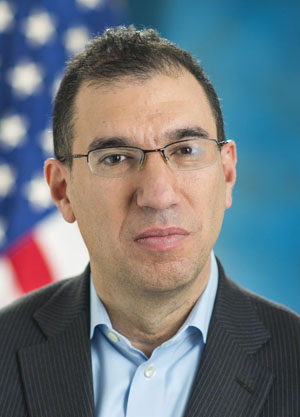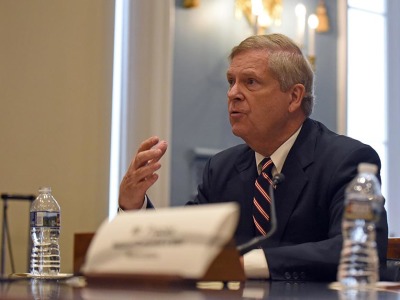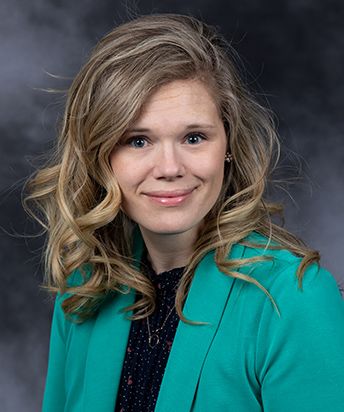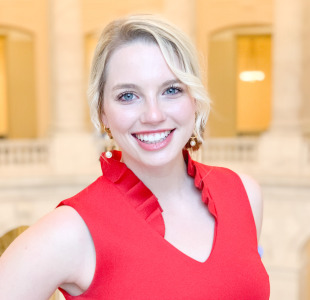Getting America back to normal means getting most of the country vaccinated, and polls suggest that’s going to be especially hard in rural areas, where many residents aren’t sold on the safety of the shots or convinced they need them.
But in an interview with Agri-Pulse, President Joe Biden’s top COVID-19 advisers say they believe that hesitancy will fade over time as rural Americans hear from doctors and other people they trust about the vaccine and see their peers being vaccinated safely.
Also critical: Making the shots more widely available in areas that are long distances from current vaccination sites such as pharmacies.
“We're not in the frame (of mind) where we think that we're gonna have lots of people refusing. We think we’ve got people who want to learn more” about the vaccine, said Andy Slavitt, the White House’s senior adviser on the COVID-19 response.
“The stakes are obviously that there will continue to be ongoing transmission (of the virus) in communities that don’t have high levels of vaccination,” he said.
The administration has been holding information sessions with hospitals and other providers and has also reached out to state agriculture commissioners and a number of rural-based organizations, including the American Farm Bureau Federation, National Farmers Union, National Rural Health Association, Federation of Southern Cooperatives, Network of Black Farm Organizations and Advocates and the United Farm Workers Foundation.

Andy Slavitt, White House
"The key is just making sure that we're casting a broad net to hear from everywhere, and also to get information back about what we're doing to try to make sure that every community has access to all three of these vaccines,” said Cameron Webb, the White House senior adviser for COVID-19 equity.
To set up vaccination sites in more remote rural areas, the White House intends to fund up to 500 mobile health units around the country. The closure of rural hospitals over recent years has added to the challenge, Webb said. The administration is working through states to ensure local communities identify the best sites, possibly through local organizations or churches, to administer vaccinations.
"You have to find creative and different ways to get to those people," Webb said.
Recent surveys of public interest in the vaccines illustrate the challenge the administration is facing. A Pew Research poll found just 60% of rural residents are planning to get vaccinated or already have been. That’s compared to 73% of suburban residents and 70% of urban dwellers.
A Kaiser Family Foundation poll found nearly four in 10 Republicans and three in 10 rural residents said they will either “definitely not” get vaccinated or will do so “only if required.” One-third of essential workers in fields other than health care also don’t want to get the vaccine.
"We've got too many people that are still hesitant,” Agriculture Secretary Tom Vilsack told reporters recently. “We’ve got to break the barriers down to that hesitancy. We have to make sure people understand that to get on the other side, open things totally back up with confidence, to get schools reopened with confidence, to allow us to go to a ballgame, to do the things we did before COVID struck, we've got to get enough of us vaccinated.”
USDA is trying to increase rural vaccination rates by offering its facilities, cold chain infrastructure, public health experts, disaster response specialists, and footprint in rural areas and tribal communities across the country. The department also has deployed over 450 USDA personnel to assist with speeding up the process to get vaccines to Americans.
Keith Mueller, director of the Rural Policy Research Institute's Center for Rural Health Policy Analysis, told Agri-Pulse there are two questions that need to be answered in order to truly get ahead of the pandemic: What communication mechanisms do you use to spread the message on the importance of the vaccine, and how do you convince someone that getting the vaccine is vital to ending the pandemic?

Ag Secretary Tom Vilsack
“I'm not convinced we've done a good job of understanding the answers to those two questions. And if we need to get to as high of percentages as what we're reading, in terms of reaching the point where we're confident we've got a good blockage on the spreading of the pandemic, we need answers to those questions,” said Mueller.
To be sure, some rural states are leading the way in getting residents vaccinated. New Mexico is administering doses at a rate of 39,769 per 100,000 residents, the nation’s highest, followed by South Dakota at 36,881 and North Dakota at 36,216, according to the Centers for Disease Control and Prevention.
Interested in more news on farm programs, trade and rural issues? Sign up for a four-week free trial to Agri-Pulse. You’ll receive our content - absolutely free - during the trial period
There are rural counties where vaccination rates are actually quite high. Some 47% of residents in Hamilton County, N.Y. (population 4,420) and Miller County, Ga., (population 5,720) have received at least one dose of the vaccine, according to the website CovidActNow.org.
Shawnda Schroeder, associate director for the Center for Rural Health at the University of North Dakota medical school, said her state has been working to ensure that rural residents hear from local, trusted sources that the vaccine is safe and that they should get it.
“The one thing we know that will work in our rural communities is if they're hearing about it from their rural doc or from their rural providers or from a rural friend, somebody who also lives in the rural community who received the vaccine, and it went well for them,” she said.
The White House understands the need to ensure that rural residents are hearing from local sources, and is trying to be supportive of rural health care providers, according to Slavitt.

Shawnda Schroeder
“People are smart enough to think for themselves. They don't want to feel manipulated. They want to talk to the type of people that they know and that they trust,” he said.
Slavitt emphasized that taking the vaccine is a matter of personal choice. "We just want everybody to have all the facts and make sure they have all their questions answered."
In central Wisconsin, rural health care systems have seen a demand for the vaccine, especially with the older population, but have struggled with signing up patients in rural areas for vaccine appointments due to rural broadband issues.
“It is harder in the rural areas due to connectivity,” said Tammy Simon, vice president of the Institute for Quality, Innovation and Patient Safety under the Marshfield Clinic Health System. “We do not have a large population, but we do have a very aged population.”
She said the MCHS uses a survey system to schedule vaccine appointments. When patients do not have internet, MCHS has had them call the hospital, and staff members have filled out the survey to get them on the list.
There is still a shortage of vaccines, however.
"We receive an average of 2,000 first doses weekly, and we have approximately 29,000 eligible adults on our waiting list,” she said. “We receive only a fraction of what we request. We have enough staff trained to provide up to 16,000 vaccines every week. We trained retired staff and existing staff to accomplish this.”
For more news, go to www.Agri-Pulse.com.



